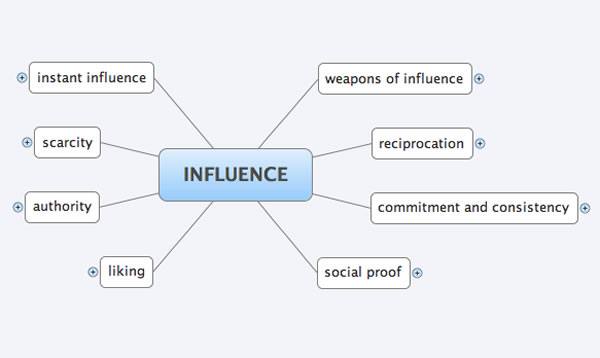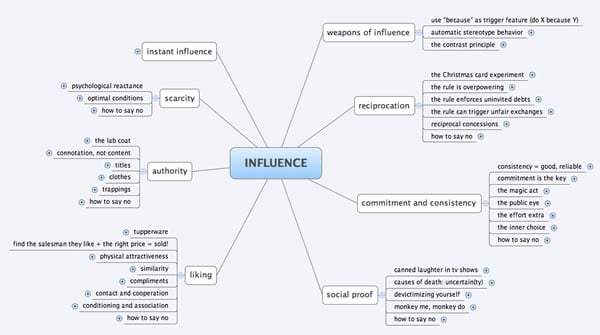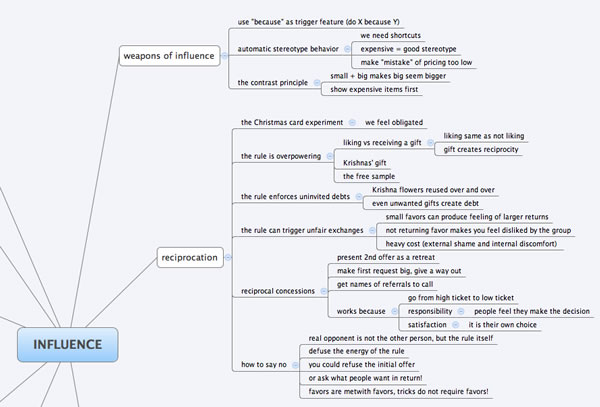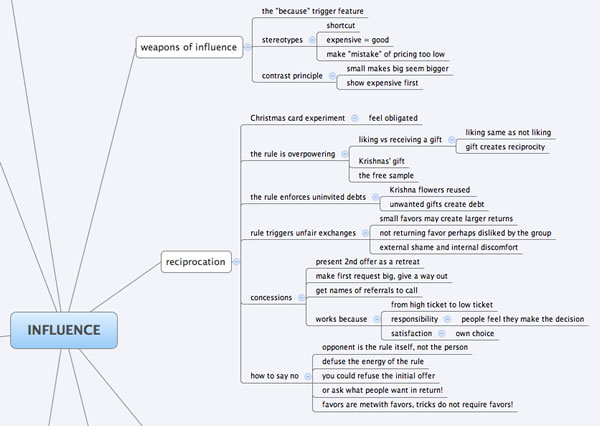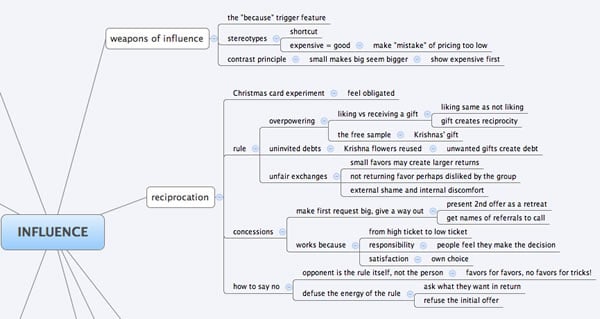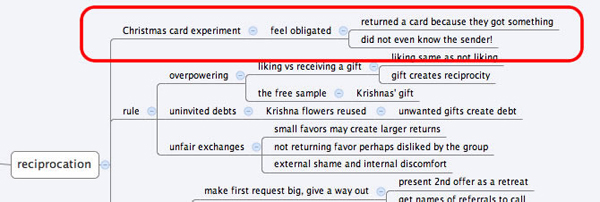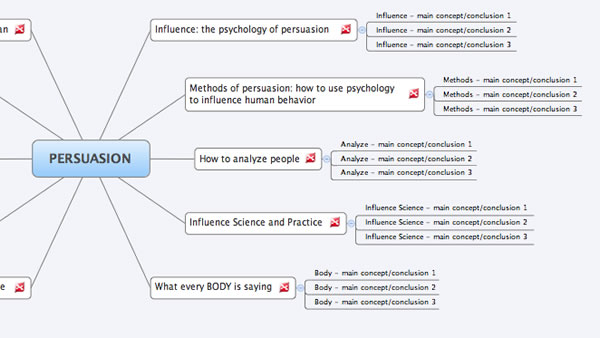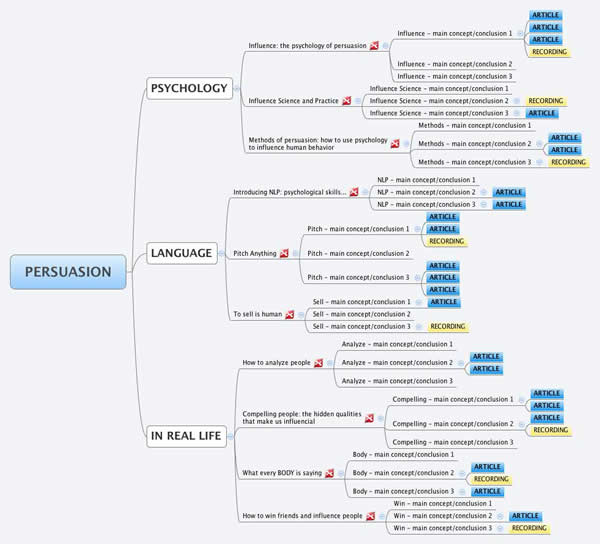In the beginning, we all feel like a fraud sometimes.
There’s a yawning gap between how you present yourself online, and how you actually feel.
You know that to be credible online, people must see you as an expert, but when you just start your blog, it’s hard to feel like you deserve that label. Sure, you have a good understanding of your topic, and you’re expanding your knowledge every day, but are you truly an expert?
In truth, being seen as an expert is as much about your confidence as it is about the depth and breadth of your knowledge. If you act like an expert, people tend to treat you like one.
But here’s the thing. Knowledge breeds confidence. And if you sometimes feel like a fraud, it just means you don’t have quite enough knowledge yet.
So the question is: what do you need to know to confidently present yourself as an expert in your topic?
And how can you acquire that knowledge as quickly as possible?
The Surprising Truth About Being an Expert
In some fields, recognized qualifications denote the true experts, and they easily make money blogging.
After all, would you let anyone but a qualified surgeon operate on you?
But in most popular blogging fields, no universally accepted qualifications exist. And yet recognized experts still occupy those fields.
So what does being an expert truly mean?
Some argue that it comes down the amount of time you’ve spent studying a topic or learning a skill — 10,000 hours seems to be the magic number.
But here’s the thing. Expert status is not absolute — it’s relative.
The people you look up to as experts will have people that they look up to as experts too.
And even if one person is considered the most knowledgeable by everyone else in your field, does that mean they’re the only expert on that topic? Of course not.
So a better way to define an expert is as follows:
For that to happen, you must have the confidence to act like an expert in front of that audience. And that means you must feel like an expert.
And the key to feeling like an expert is having enough of the right knowledge that you feel comfortable in the company of other experts.
So here’s our ultimate guide to becoming a confident expert in record time.
How to Find the “Minimum Viable Knowledge” for Expert Status
When you think of the experts in your topic, what names spring to mind? Who are the people who already have the recognition and respect you desire for yourself?
Two or three people should pop into your head immediately. With a little extra thought, several more should easily suggest themselves.
What if you had the combined knowledge of those people?
Not every tiny detail of what they know, but a good overall understanding. Then would you feel more like an expert? I bet you would.
Entrepreneur and motivational speaker Jim Rohn said:
If you want to feel more like an expert, you must spend more time with other experts — by studying their best work.
So create a list of five to ten target experts — the most prominent people in your field, those you think you could learn the most from.
For example, let’s take the field of persuasion. The following are some of the prominent experts in that field:
- Robert Cialdini
- Dale Carnegie
- Dan Pink
- Oren Klaff
- Nick Kolenda
Now take each expert one at a time and identify their most important works.
Have they written any books? If so, what’s their most popular one? Their most influential? Check out Amazon to find any bestsellers. Use Google to find other mentions of their books — what are other influential people saying about them?
Sometimes a book is more famous than that expert who wrote it, so Amazon can also be a good way to identify experts that weren’t already on your list.
Also check out the expert’s website or blog, search for any talks on YouTube, and look for their podcasts on iTunes.
If the expert hasn’t published a book, try to find out what books they consider essential, and add those authors to your list too.
Let’s focus on Robert Cialdini. The following shows an overview of his content, organized as a simple mind map:
Once you’ve mapped out each expert’s body of work, you’ll pick just two or three works to focus on — perhaps their most famous book and a talk. Or their blog and a couple of videos. Taken together, this will be the content you’ll need to acquire to build your expert confidence.
Now that you’ve identified the knowledge you need to acquire, we’ll look at how to rapidly acquire that knowledge, starting with how to get a solid understanding of a book in just one hour.
Note that throughout this post we will use mind maps like the one above to capture useful knowledge. You have numerous options for tools to create mind maps, including:
- XMind — a popular desktop tool for Mac and PC (has a limited, free version)
- Mindmup — a free online mind mapping tool which integrates with Google Drive
- MindJet — the premium desktop tool for Mac and PC (good, but expensive)
For a complete list of mind mapping tools check out this ultimate guide.
How to Learn the Contents of Almost Any Book in Just One Hour
Popular books are the cornerstones of the knowledge you will acquire from others in record time. Books – particularly conventionally published books – have built-in credibility because few people have the knowledge or credibility to land a publishing deal.
Interestingly, with so much information available online, few aspiring experts take the time to study the essential books on their topics. As a result, reading just a handful of books can give you a huge knowledge advantage in a short space of time.
If you limit your study to books that are bestsellers, have top ratings, or are highly regarded by other experts, you can be fairly certain the knowledge is worth learning.
The technique you’ll learn here can be adapted for any form of information — not just books — so if you learn this, you will have a tool to acquire almost any type of knowledge.
Transforming a book into readily accessible knowledge takes five simple steps. Follow these steps, and with practice you can gain the knowledge of a 200-page book in just one hour — without reading it in detail.
In fact, using this process will give you a better understanding — and better recall — than someone who has read the book in full.
Step 1: Get a “Helicopter View” of the Entire Book
This first step focuses your mind for the next steps. It gives you the context for the individual chapters and will allow you to get a better understanding of the book, quicker.
When you first pick up the book, do the following:
- Study the cover of the book.
- Scan or quickly read the back of the book.
- Browse the table of contents.
- Flip through the pages of the book.
Take no more than five minutes. Then ask yourself:
- What is the book essentially about?
- What chapters or sections of the book appear most useful?
- What are the most interesting headings?
- What other things pop out?
Make sure you don’t read the detail. Reading will slow you down and won’t help you right now. Simply scan the material so you can answer the questions above.
Once you’ve finished scanning, do the following:
- Create a list of chapters you want to understand (some chapters might not be relevant.)
- Write down any new words or ideas you noticed that you’d like to learn more about.
- List any initial questions you have right now, based on only scanning the book.
Step 2: Create Your Initial Overview
From your first scan of the book, you should know how much of the book you need. Do you need the entire book, or only certain chapters?
Create a new mind map putting the name of the book at the center and the names of the chapters you want to learn around it.
Don’t cheat and use the table of contents for this — actually flip through the book. This helps you to see more of the contents and create a better mental picture of the book.
Here’s the result of this process using INFLUENCE: The Psychology of Persuasion, one of Robert Cialdini’s most famous publications.
Notice I’ve only added the chapter names to the mind map. I haven’t added anything else yet.
We build the mind map from the inside out — starting at a high level and going into more detail later. This helps you maintain a good overview of what you are learning, without burying yourself under a pile of details from the start (as most people do).
Step 3: Expand Your Map to Cover All the Useful Details
Now the real work starts — transforming the relevant chapters of your book into a detailed mind map.
Try not to think about this step too much — simply do it! The map does not have to be perfect because we will refine it later on.
Remember, you don’t need to read the content in detail — an interesting side effect of this process is that you will learn a lot by simply doing. Your brain will take in a lot more than you think.
At this stage you’re only filling your map with content from the book. You can add your own analysis, and information from other sources later.
Go through each chapter several times, each time adding another layer of detail with the map. Different books will have different levels of internal structure, but start with the headings within each chapter.
After adding this detail, my map looks like this:
Once you’ve exhausted the headings within the chapter, you can add important detail words and phrases. These are the concepts that appear in italic, bold, or are highlighted in some other way on the page — e.g. shown as separate notes or callouts.
After this stage, my map now looks like this:
You’ve now captured all the information you need to know from the book, but in a raw form. Now it’s time to transform that raw information into knowledge you can use.
Step 4: Optimize Your Mind Map for Maximum Usefulness
Your brain loves clear overviews, but chances are the mind map of your book isn’t clear to you yet. In fact, you might find it a bit overwhelming, even scary. So let’s fix that now.
Your goal is to make the mind map as simple as possible without sacrificing any required knowledge.
The following tactics will help you optimize your mind map.
Tactic #1: Remove redundant words
Certain words, like “the”, “I” or “we” help us create grammatically correct sentences but often don’t add to the core meaning of a phrase, so they can be removed.
For example, “the contrast principle” can be reduced to “contrast principle” in my map.
Look carefully at the context, and make sure removal doesn’t change or obscure the meaning, but you can remove them most of the time.
Also the first version of your map will often include duplicate words.
For instance, you might have a branch in your map labelled “psychology of persuasion” with a child branch “psychological weapons.” This is a kind of duplication — “psychology” and “psychological” are essentially the same term.
So you can remove “psychological”, reducing the second label to “weapons.” The psychological part can still be easily inferred from the context.
It’s a small step but applied across your whole map could add significant clarity.
Tactic #2: Condense verbose phrases
Sometimes the labels you copy directly into your map from the book are more wordy than they need to be. Sure, the extra words add meaning or nuance, but they’re not required to understand the basic concepts.
Look at each entry and consider how you can simplify it — try rewriting it using fewer, power words.
For instance, I reduced “automatic stereotype behavior” to “stereotypes”, which is all that’s needed to set the context for the child branches.
After applying these first two tactics, my mind map looks like this:
Tactic #3: Prune and combine branches
The most powerful way to simplify your mind map is to reduce the number of branches.
Look for branches that have nearly the same information, or overlapping information, and put those together in a single branch.
This tactic doesn’t just apply to branches as a whole, but also to lower levels of the map, like the section headings or paragraphs.
Finally, look at each layer of a branch and see if you can rearrange any of the content to make it clearer? Don’t be afraid to move branches around in the hierarchy. Do whatever’s necessary to create a map that gives you a clearer, simpler overview.
Using this tactic, I did the following:
- I noticed that three of the branches under “Reciprocation” mentioned rules, so I combined them to create one general “rule” branch with the individual rules underneath.
- I restructured the five branches under “How to Say No” to become two main sub-branches. That made the information clearer and easier for me to digest than a flat list of ideas.
This is what I ended up with:
In the optimized map above, the “Christmas card experiment” entry is a little isolated. Ideally it would have been placed under one of the other branches, but it didn’t really fit.
Step 5: Fill in the Knowledge Gaps
It’s time to step back and review you mind map. Look at each branch and its children and try to recall the concepts each part of your map represents.
You should be surprised how much of the knowledge covered by the book you already understand based on your brief analysis of the book.
Yet you may have also seen things in your map that don’t make sense yet. That’s okay. In this final step, you’ll dip back into the book to fill in any gaps in your understanding.
Going back to the entry labeled “Christmas card experiment,” on reviewing your mind map, you may realize that you don’t know what the sub-branch “feel obligated” actually means.
Just dive back into the chapter covering that material, carefully reading the relevant section to fill in the missing information.
One of the easiest ways to do this is to ask yourself questions about the item that are not clear. In this case, what exactly makes people feel obligated? How did the Christmas card create a feeling of obligation?
These questions help to focus your reading. You don’t need to read a whole section, just enough to answer your questions.
Once you’ve done that, expand your mind map to capture your new understanding. Add enough detail so that next time you review the map, even if it’s days or weeks later, you’ll understand what it means.
Here’s how I modified the Christmas card entry:
If you’ve made significant additions to your map, return to Step 4 to optimize it again.
How to Transform Almost Any Source of Information into a Knowledge-Boosting Mind Map
Congratulations! You created a mind map of your book in record breaking time.
And the more books you summarize using this method, the easier it will become. Your expertise will grow too — you should feel more confident and skilled each time you go through this process.
But of course, useful knowledge isn’t confined to books. Other sources of valuable information exist – such as blogs, talks, and video tutorials.
Good news — you can acquire useful knowledge from these sources using a similar process, with some small adaptations.
How to Map a Blog
These days, much of the latest thinking on a topic can be found in blogs rather than books. If the experts on your list have active blogs, you can quickly acquire the knowledge from those too.
Broadly speaking, you can treat a blog the same as a book, with the posts being the equivalent of individual chapters. However, not all of the posts will be relevant or valuable, so you’ll need to select just the 10–20 most useful.
The following ways will help you narrow your list:
- If the entire blog is relevant to your topic, use a tool like QuickSprout or SocialCrawlytics to find the most popular posts on the blog. Alternatively, use the blog’s list of Popular Posts.
- If only certain categories are relevant to your topic, pick the most shared or most commented posts from those categories.
- If the expert allows guest authors, you could potentially focus only on posts by that expert.
Once you know which posts you’ll map, add them to the first level of your mind map. Then quickly skim each post, pulling out subheadings and highlighted words for your lower-level branches.
If the post links to other posts, follow those links, but only read enough to answer any specific questions not answered by the post itself. Don’t allow yourself to get sidetracked.
Once you’ve mapped out the most important posts, you can use the tactics explored earlier to optimize your map — removing redundant words, condensing phrases, and pruning and combining branches.
How to Map Audio or Video
Creating a mind map the first time you watch or listen to audio or video content such as a talk, presentation, or tutorial is even more powerful than mapping a book or blog.
That’s because while you can easily dip back into the table of contents of a book, or browse a blog to refresh your memory of the key ideas, it’s more difficult to do that with audio and video. You waste lots of time trying to locate the right section.
So here’s how you can create a mind map of a recording.
Step 1: Create the initial mind map
When you find videos and podcasts online, they often have a description of the topics that will be discussed. Use this information to create the beginnings of a mind map which has some first-level branches.
If no such description exists, that fine; skip this step.
Step 2: Start the recording and begin mapping
Start watching or listening to your recording with your mind map software open, and add any significant ideas as they appear. When the focus seems to switch to a new sub-topic, create a new top-level branch.
With video, on-screen slides or call-outs might help you identify major sections, but if not, don’t worry; just use your best instincts.
Most recordings are not 100% filled with new information — usually they have some repetition and redundancy, so you can speed up the recording to become more efficient.
Start with 1.2 times the normal speed, and increase further if you can handle it. Usually the optimum speed is determined by your typing speed. You may find yourself listening or watching at 2 times the normal speed, depending on the topic, speaker, and information density.
Of course, you can always pause the recording to give you time to add information, but make sure you don’t do this too often — try to keep going. If things are too fast for you, simply slow down the recording to 0.8 times the normal speed.
Note: The HTML5 version of the YouTube player allows you to vary the playback speed. Likewise, the Podcasts app on iOS allows you to play at 0.5, 1.5 and 2.0 times normal speed.
Remember, you don’t need to capture everything perfectly. You only need the key ideas and enough detail to understand the most important parts of what you are watching or listening to.
Step 3: Add any remaining details from memory
At the end of the recording, go through the map once more. As you do this, you may remember things from the recording you did not add before — add them now.
Note: You can add anything you remember, even if it feels insignificant. Details that stuck in your memory could help trigger other memories next time you review the map.
Step 4: Optimize your map
Even after adding extra details, you probably won’t have captured everything, but that’s fine. What’s more important is simplifying and organizing the information exactly as we did before.
Your goal is to create a clear overview that’s easy to follow and understand. Don’t worry if nobody else will understand it — it’s your overview, and only you need to use it!
After this step, if you feel like you need some more information, go back into the recording and listen to that part again. But usually you’ll see you did a great job of transforming the recording into a mind map.
Tying It All Together: One Map to Rule Them All
So far this process has taught you how to create individual mind maps for the major works of each of your experts. These will give you a solid understanding of those works far more quickly than reading them in full.
However, a confident expert doesn’t just have pockets of knowledge; they have an integrated understanding of their topic.
To gain this, you’ll need to create a master map that combines all your experts’ knowledge into a single overview.
Here’s how you do that:
- Create a mind map with all the books on the first level. Add the three to five most important conclusions or concepts to the branch of each book. (You can also add links to the individual mind maps to make it easier to get more detail.)
- Add each of the blogs you’ve mind-mapped, also at the top level, adding the titles of the three to five most important posts to the main branch of each blog.
- Add the titles of any video or audio recordings to the map. Put each where you feel it has the biggest impact or where it fits best. You don’t necessarily have to keep the recordings together with the books or blog from the same expert.
- Just like you did before, clean up the map. Combine branches and create a clear overview. This is where the lines between different experts will begin to blur. Don’t worry — that’s intentional. It means you’re gaining an integrated understanding.
Note: This is a basic method for creating a master mind map — visit this page for a more advanced approach.
Using the method above, here’s how the master mind map for the topic of Persuasion might look after the first step:
By the end of the last step it might look more like this:
Be prepared to spend a little time refining your master map — it’s the secret to your expert status.
Treat it as a living document — each time you read a new book or blog article, or listen to or watch a recording, you can update your master map.
And refer to it often — at least once a week. That way, the knowledge will always be fresh in your mind.
Get on the Fast Track to Expert Status
Deep down you know it’s true.
If you follow the right experts and absorb the right books, blogs, and talks, you’ll feel more like an expert yourself.
But the effort seems daunting. It will take hundreds of hours, surely!
That’s why you haven’t done it yet. And that’s why you feel still feel like a fraud.
In reality, you can feel like an expert with much less knowledge than you think. And gaining the knowledge you do need is quicker than you ever thought possible.
Just imagine actually feeling like the confident authority you dream of becoming. Imagine describing yourself as an expert to others and not feeling the slightest twinge of anxiety.
Remember, that feeling of quiet confidence is now within your grasp.
You’re ready. You have the tools you need. Your first mind map is just one hour away. And each completed map is one more step toward expert status.
So get started. Become the confident expert your audience deserves.
About the Author: Arjen ter Hoeve created MindmapsUnleashed.com where he helps people do more of what they value most, by working and studying smarter, using self-improvement hacks, brain training, and proven scientific techniques. He has a practical mini-course on getting more time by mind mapping your work. Get it here at the Mindmaps Unleashed website.
The post How to Become a Confident Expert (and Stop Feeling Like a Fraud) appeared first on Smart Blogger.

